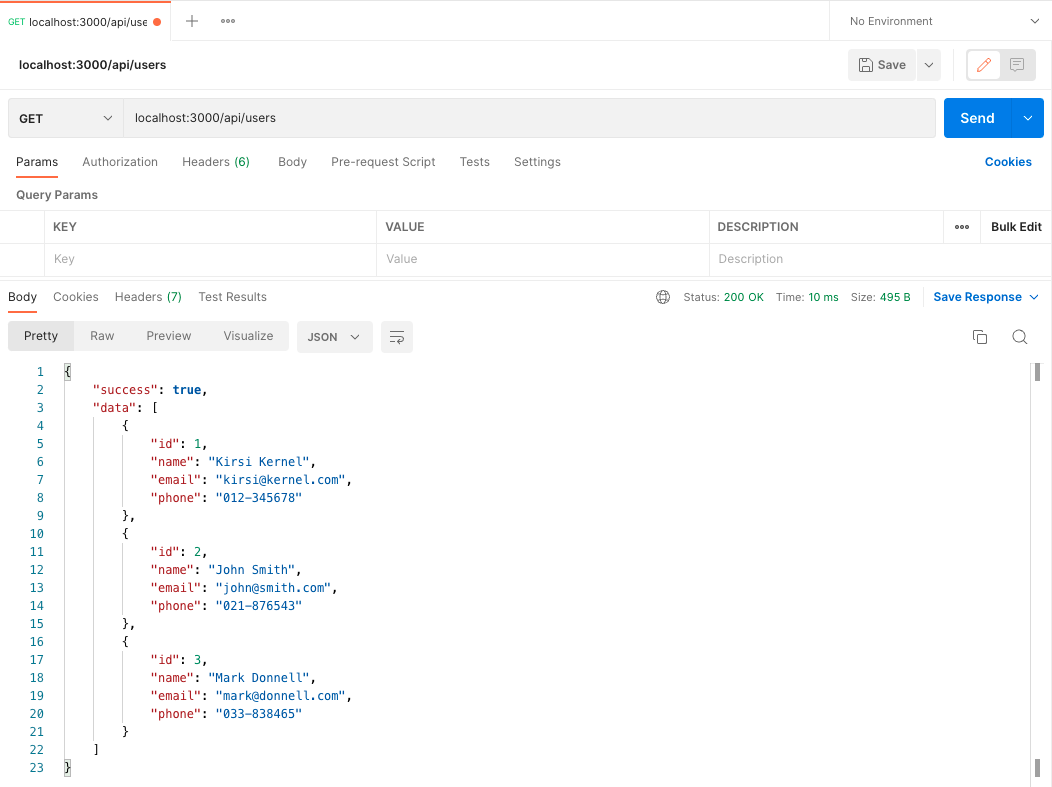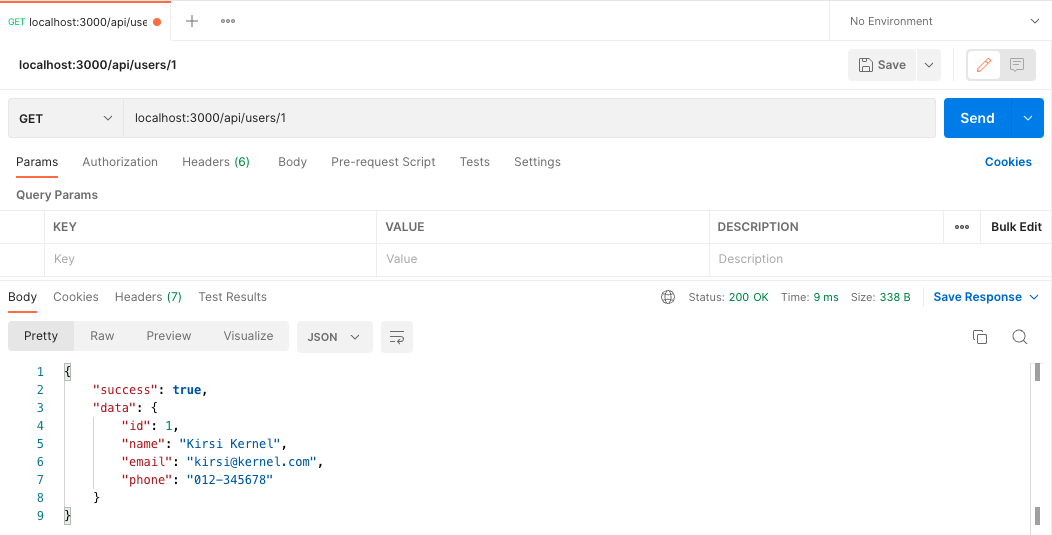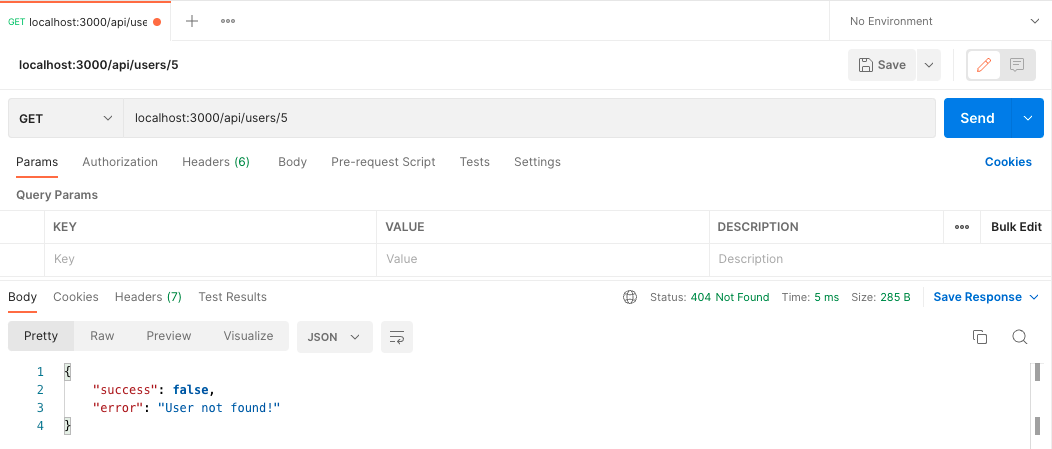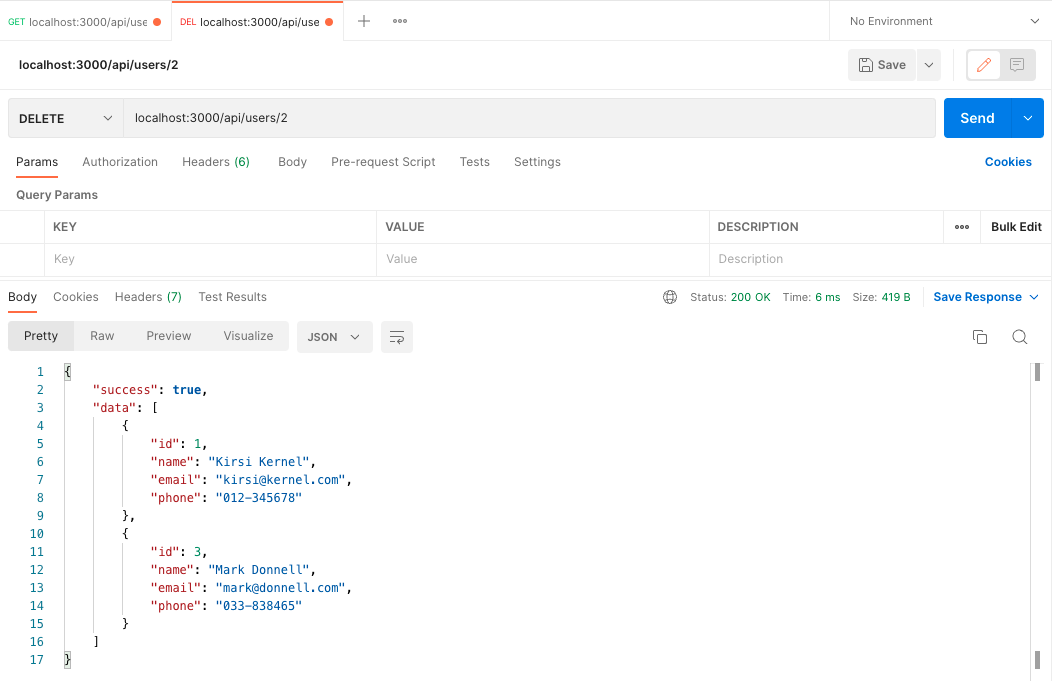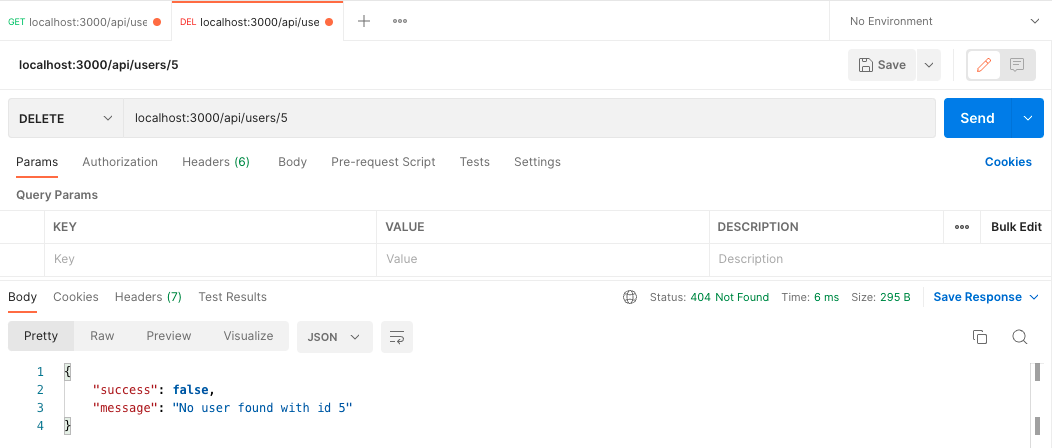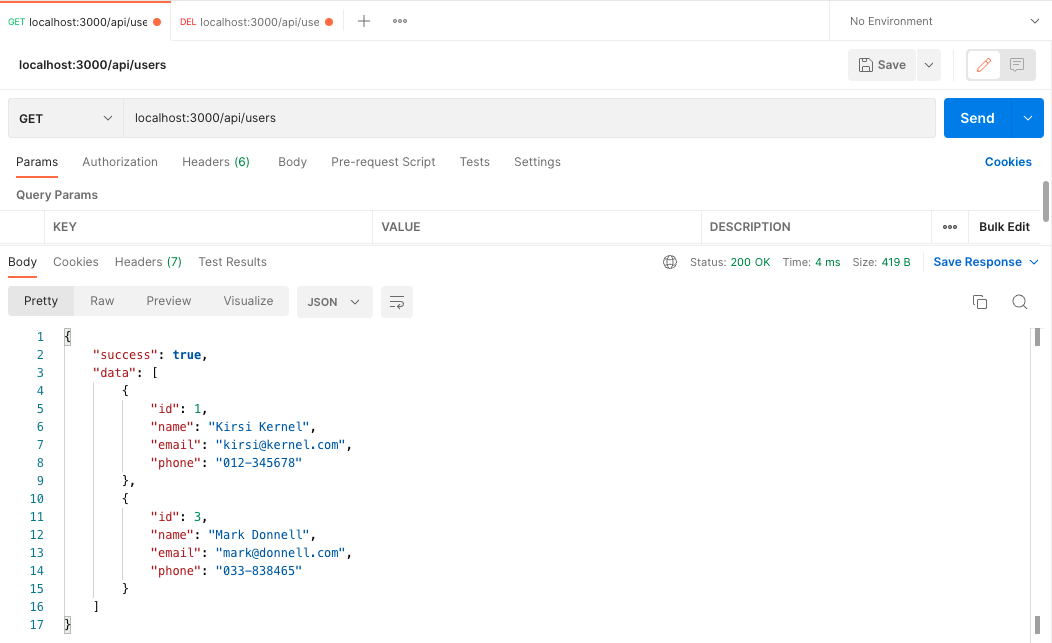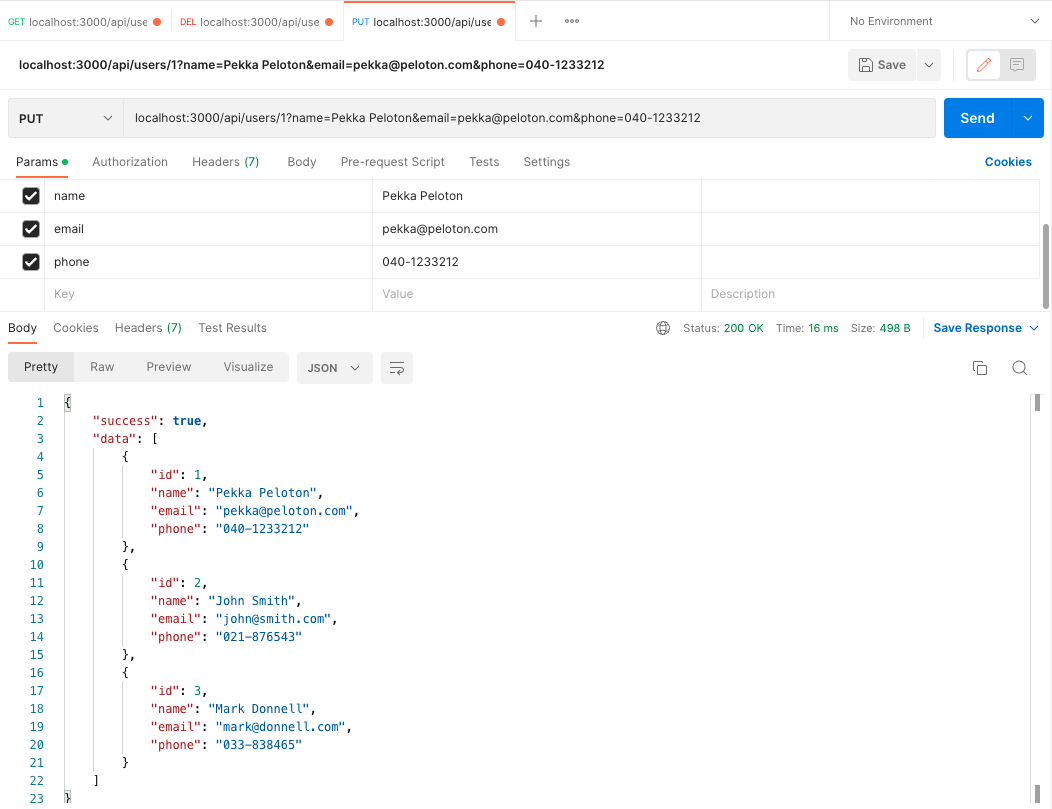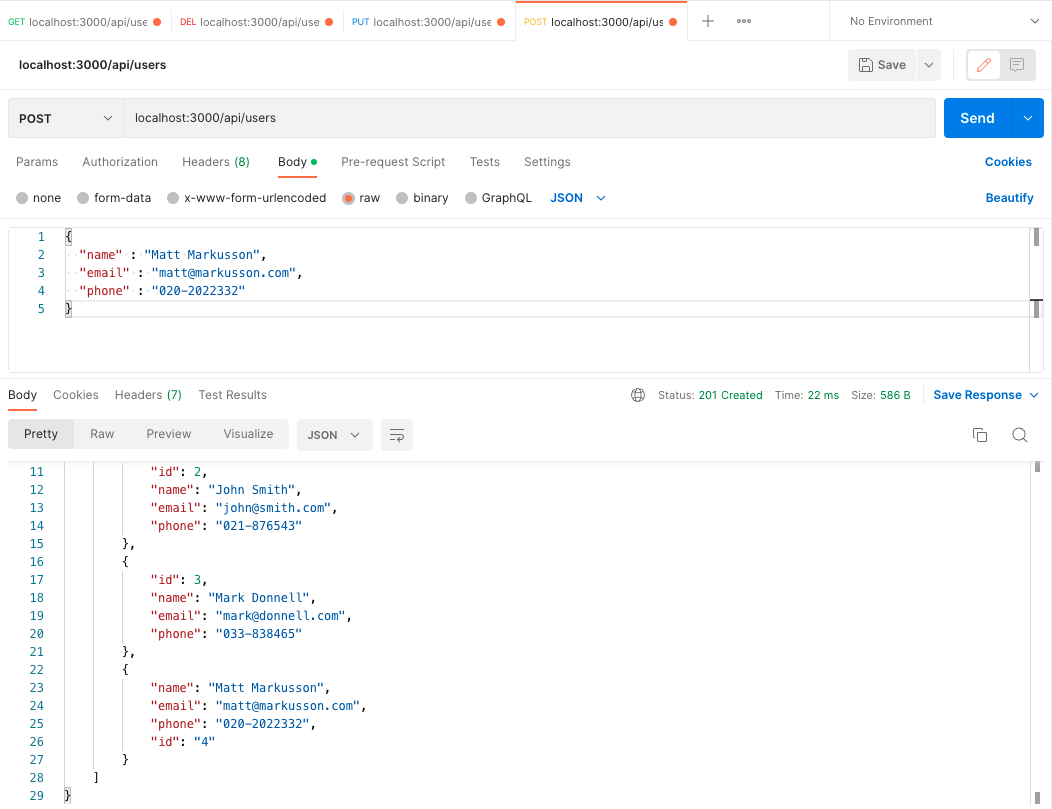RESTful API - Example
Users REST API
This example uses a local file to import the data and the data is not persistent as was the case with JSON server. This example is showing different method requests made to the same endpoint, showing that the method used is determining the logic that is being executed by the server. This exercise will store all the users data with JSON, without any interactions to the real database.
Routes
Here is a simple chart of basic REST APIs you will make for your users application:
| Resource | GET read | POST create | PUT update | DELETE |
|---|---|---|---|---|
| /api/users | Returns a list of users | Create a new user | - | - |
| /api/users/:id | Returns a specific user | - | Updates a specific user | Deletes a specific user |
Project
Create a new Node.js application and install Express, Nodemon and dotenv.
1 2 3 | |
Users data
You can use a below starting users data in your application.
| data.js | |
|---|---|
1 2 3 4 5 6 7 8 9 10 11 12 13 14 15 16 17 18 19 20 21 22 23 | |
Save file to your project folder.
Add environment variables to a .env file
Create a .env file in the root of your project and and PORT variable.
1 | |
Note
Remember create a .gitignore file and add .env and node_modules.
Users data
Modify your index.js to use Express and dotenv.
| index.js | |
|---|---|
1 2 3 4 5 6 7 8 9 10 11 12 13 14 15 | |
GET all the users (CRUD)
Create a new API endpoint (route) to handle GET request and return all the users.
| GET method | |
|---|---|
1 2 3 | |
Test GET request to http://localhost:3000/api/users/ with a Postman or browser. You should see the returned JSON data.
GET one user (CRUD)
Create a new API endpoint (route) to handle single user with GET request.
| GET method | |
|---|---|
1 2 3 4 5 6 | |
Now route id parameter is used as a our user id. Correct user will be find from the users collection and found user data will be returned to the caller or 404 status code with error message if user can not be found.
Note
You will need to use : to add parameters to route path.
Test GET request to http://localhost:3000/api/users/1 with a Postman or browser. You should see the returned user JSON data.
Remember test also id which doesn't exists.
DELETE one user (CRUD)
One user can be deleted with using HTTP DELETE request. Request looks the same as above get one user, only a DELETE is used as a request.
| DELETE method | |
|---|---|
1 2 3 4 5 6 7 8 9 10 11 12 13 14 15 | |
Use DELETE request to delete one of the users from server.
Remember try to delete user which doesn't exists.
Finally request all the users again to see changes.
PUT user data (CRUD)
You can use PUT request to update user data in server side.
| PUT method | |
|---|---|
1 2 3 4 5 6 7 8 9 10 11 12 13 14 15 16 | |
Use PUT request to send a new user data to server. Use Query Params to set a new user name and click Send button to send a new request to server. Use URI which contains some of your users id, for example: http://localhost:3000/api/users/1
Note
Query parameters are appended to the end of the request URL, following ? and listed in key value pairs, separated by & using the following syntax:
/api/users/1?name=Pekka Peloton&email=pekka@email.com&phone=040-1233212
Look how request URI will include your user name to query parameters. Send request to server side and look response in Postman.
POST user data (CRUD)
You can use POST request to add a new user data in server side.
| POST method | |
|---|---|
1 2 3 4 5 6 7 8 9 10 11 12 13 14 15 | |
Note
JavaScript map function will return all the id's in an array and ... moves array to integer values. So, now max function can find the biggest id value. New user will be added to users with JavaScript arrays concat function.
Read more about
Use Postman to send POST request to server side. This time we will use JSON data, which will be included in request body.
- Change request type to
POST - Use
http://localhost:3000/api/users/route - Select
bodyandrawto write use JSON data - Remember select
JSONdata type - Write user as JSON data
| json data | |
|---|---|
1 2 3 4 5 | |
- Send request to server side
In a server side, data will be inside request.body object. You can use Express JSON parser to get it easily. This express.json() is a built-in middleware function in Express. Express JSON parser will change the incoming JSON data (inside request) to JSON object and it will available inside request.body object.
| index.js | |
|---|---|
1 2 3 4 | |
Goals of this topic
Understand
- What ExpressJS is.
- Know how to create a simple Express application.
- Know how to use routing in Express.
- Know what environmental variables are and how to use them.
